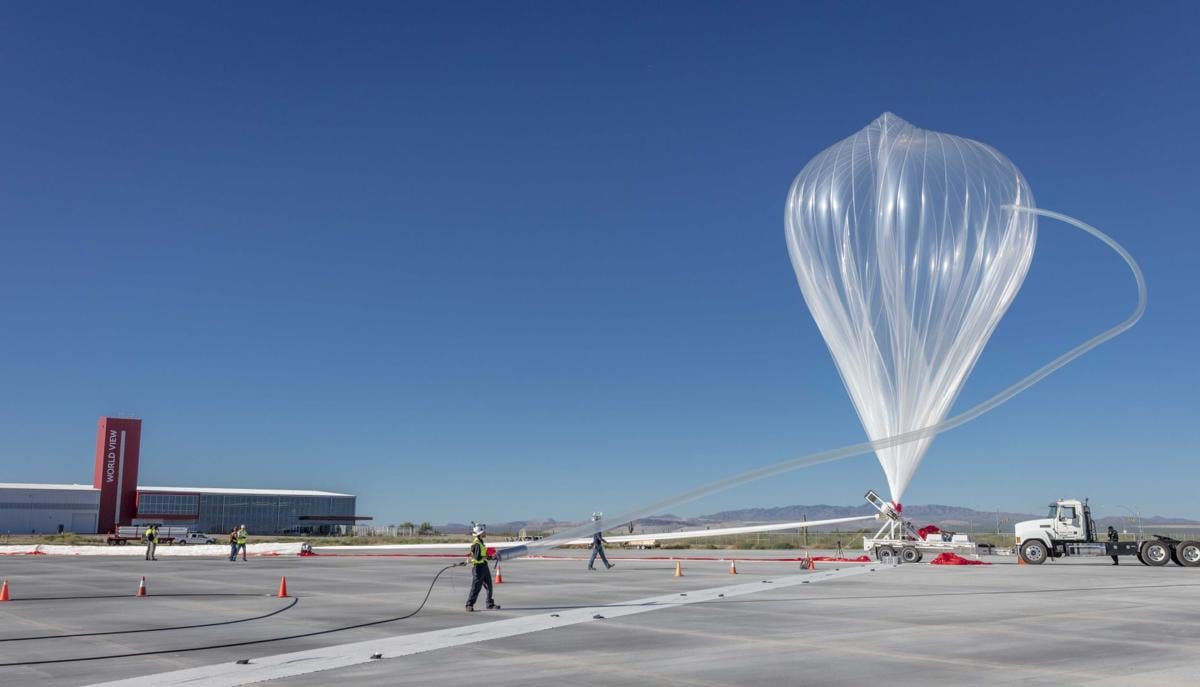Tucson-based World View Enterprises says its first stratospheric balloon mission from Tucson ended successfully Friday, with a controlled landing near the Grand Canyon.
The five-day flight was the longest yet and met all customer requirements and technical objectives after launching Oct. 1 from Spaceport Tucson, south of Tucson International Airport, the company said.
Among other things, the company’s remotely controlled, unmanned “Stratollite” carried a communications payload for the U.S. Southern Command, a multi-branch military agency that is exploring the use of the balloon vehicle to help combat human and drug trafficking and maritime piracy, World View said.
The company said the balloon vehicle successfully demonstrated both directional steering and its ability to stay stationary. The craft uses proprietary technologies to navigate and can stay over a fixed point on Earth, achieving a form of geostationary orbit at a fraction of the cost of space satellites.
The test also validated all vehicle sub-systems, including using solar power through day and night cycles, and altitude control between 55,000 and 75,000 feet, the company said.
“This is our first successful attempt at testing all of the Stratollite’s integrated critical systems over the course of multiple days, and we are thrilled with how everything worked,” said Jane Poynter, World View founder and CEO.
The vehicle was successfully and gently landed Friday morning at a predetermined site south of the Grand Canyon, World View spokesman Andrew Antonio said.
The test flight was coordinated with the Federal Aviation Administration, which recently awarded the company a launch permit, and local airspace authorities, Antonio said.
The demonstration mission carried multiple payloads, besides the military package including an off-the-shelf, Canon EOS 5DS camera to demonstrate the Stratollite as a viable platform for high-altitude earth observation.
The vehicle also flew an internally developed World View system for near real-time, high-bandwidth data transfer from high-altitude, “crucial to delivering to real-time data to future commercial customers,” the company said.
The company’s previous longest flight was 27 hours during a test run in August.





